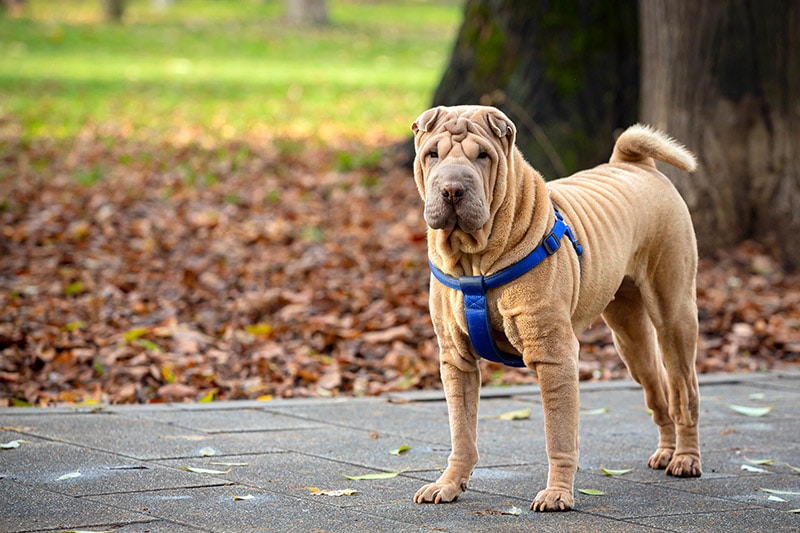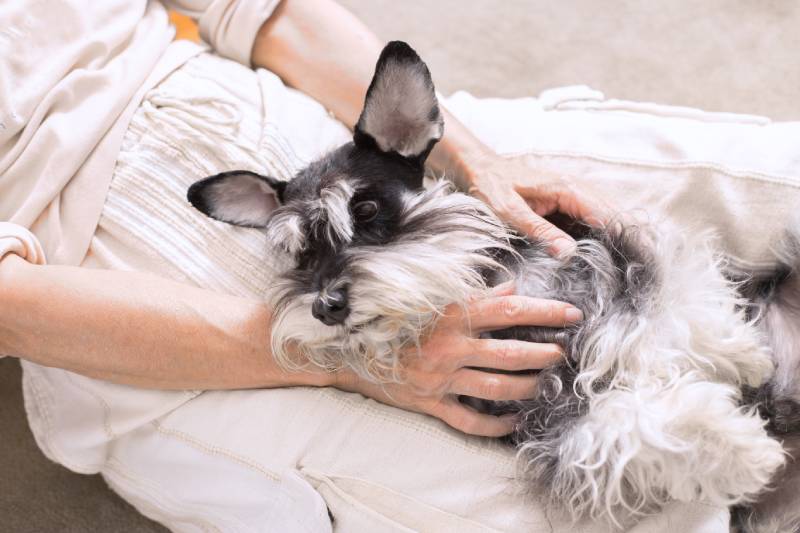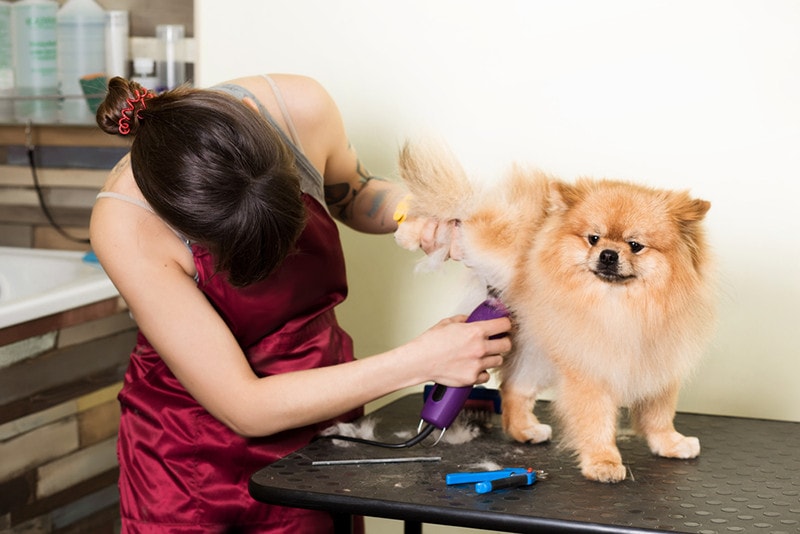How Often Should I Wash My Dog’s Bed? Vet Approved Facts & Tips
Updated on

Click to Skip Ahead
It’s funny how often we overlook cleaning certain things. We regularly wash our sheets and clothing and bathe our dogs when they are muddy and smelly. But we tend to forget about our dog’s bedding!
It’s actually quite important to wash your dog’s bed regularly because it can harbor nasty bacteria, parasites, and of course, smells.
Depending on your dog’s breed, their exercise levels, their type of outdoor activities, and whether they suffer from health problems, you should clean your dog’s bed every 1 to 2 weeks.
Here’s more information on why dog beds need such frequent washings and the best ways to clean them.
How Dirty Are Dog Beds?
Since dogs regularly go outside and most breeds are only bathed once every 2 months or so, they regularly drag in all kinds of germs and deposit them on their favorite sleeping spot. Even when pets seem healthy, they can still carry infections to other animals and humans on their coats.
If they come into contact with the urine, feces, saliva, or vomit of an animal with an infection, your dog will bring this home, where it can live on surfaces like their bed for up to a year, even without a host. External parasites like fleas and bacteria like E.coli were found on dogs’ fur, footpads, and bedding in a 2022 study.1 Other parasites, such as mites, roundworms, and fungus, and bacteria, such as Salmonella spp. and Campylobacter, pose a risk to humans (zoonoses) and are carried by dogs.
As you can see, it’s crucial to wash that bed often!
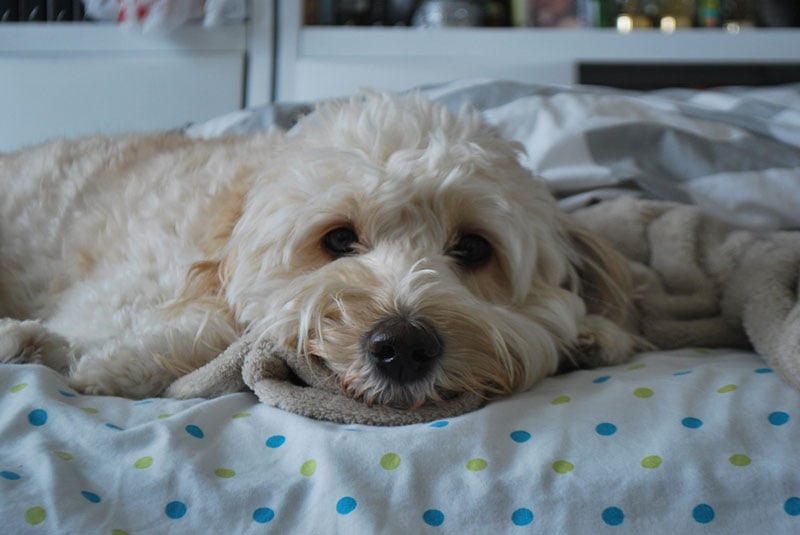
Doing a Quick Clean
You can do a quick clean of the bed by vacuuming it or using a lint roller to remove the bulk of the hair. But this doesn’t eliminate any of the bacteria or germs, so consider the quick clean more of a pre-clean before you do a more thorough cleaning.
Cleaning Your Dog’s Bed
Pre-treat Stains
After removing as much hair as possible, you should pre-treat any stains. If there aren’t any, you can move on to the next step. Otherwise, you’ll want to use a pet-safe enzyme stain remover before throwing everything in the wash.
You can also opt for something like white vinegar, though either way, you’ll want to remove the cover and do this separately. This way, the vinegar or stain remover doesn’t sink into the stuffing or filling.
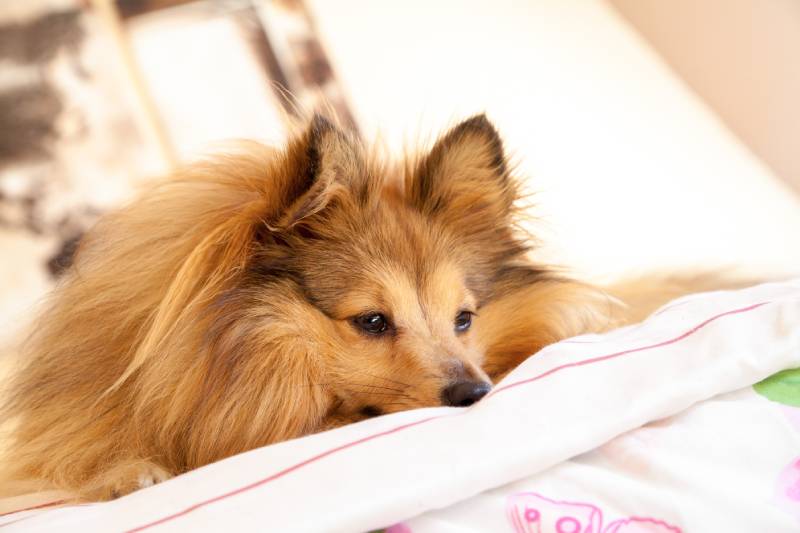
Check Instructions
The first thing that you need to do is check the washing instructions for the bed. This can tell you exactly how to wash it and any details, such as how to clean the filling if it has a removable cover. It should also tell you what temperature it should be washed and any necessary drying instructions.
That said, you will need to set the temperature to a specific degree in order to kill off any infections or parasites that might be present.
How often you wash it also depends on several factors:
- How much your dog sheds
- Your dog’s activity level
- How much time they spend outdoors
- If they have health issues or skin injuries
- If they are fed on a raw diet
- The time of year
- If anyone in the house has allergies
If you or your dog have allergies, you’ll need to wash it more often, and keep in mind that the longer you go between washings, the more challenging it can be to remove the germs. You’ll also want to consider more frequent washings during flea-and-tick and shedding seasons.
Make Sure the Water Is Hot
You should wash all your dog’s bedding in 140°F water or on the hottest setting to kill off any pathogens or germs..
You should use dog-safe detergent and put it through an extra rinse cycle to remove any excess product. You’ll also want to avoid using fabric softeners or any kind of scent boosters
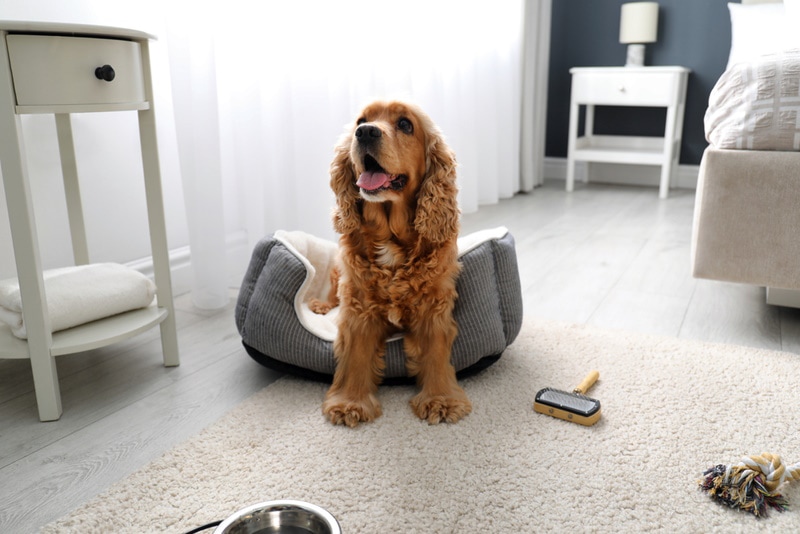
Dry the Bed
You should hang up the cover to dry, which is more eco-friendly, and the UV rays can help get rid of some of those germs. If you don’t have that option, then you can dry the bedding at the highest dryer setting, but the inside of the bed will likely need to be hung up to dry.
Choosing an Easy-to-Clean Dog Bed
There are a few features that you can look for when shopping for a new dog bed—especially now that you know how frequently you need to wash them!
You’ll want something fairly low maintenance and easy to clean, so consider the following:
- Read the label and the washing instructions that come with the bed before purchasing. Look for a machine-washable bed or at least one that has a removable cover that you can remove and throw in the washing machine.
- Aim for a bed made with durable fabric that can hold up to multiple washes. Remember that it should be tough enough to stand up to weekly washings.
- If your dog is getting on in years or tends to have accidents, you’ll want a dog bed with a waterproof cover.
Conclusion
How often you wash your dog’s bed depends on several factors, but every 2 weeks is the longest that you should go. If allergies are an issue for either you or your dog, you might need to wash the bed more often than that.
So, don’t focus on how cute the bed is. Your priority should be your dog’s comfort and how easy the bed is to wash. Remember to opt for plain detergents and avoid scented products that might affect your dog’s health.
With the plethora of dog beds to choose from out there, you’re bound to find something that your dog will love. You should also be able to just whip it into the washing machine and be done!
Featured Image Credit: Roberto Nickson, Unsplash



